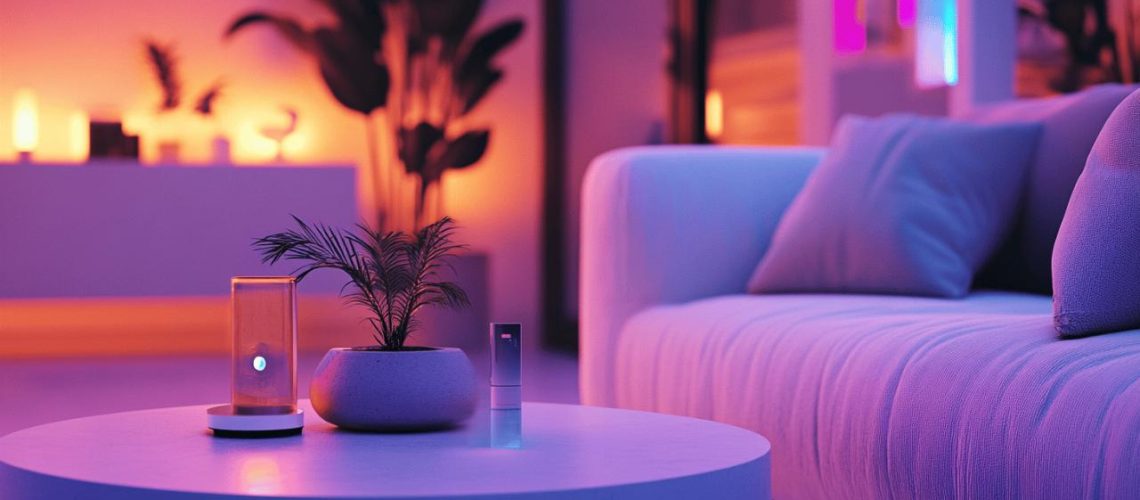Technology continues to evolve at an astonishing pace, creating new opportunities to streamline tasks and enhance our lives. From automated systems to intuitive interfaces, innovations are making everyday activities more efficient while reducing our workload. These advancements integrate seamlessly into our homes, transforming how we interact with our living spaces.
Smart home automation systems
The modern home is becoming increasingly connected, with devices that communicate with each other to create environments tailored to our preferences. Smart automation systems not only provide convenience but also offer substantial energy savings and improved security, making them practical investments for homeowners looking to upgrade their living spaces.
Voice-controlled lighting and appliances
Voice-activated systems have revolutionized how we control our home environments. By simply speaking commands, users can adjust lighting brightness, turn appliances on or off, and even change settings across multiple rooms simultaneously. Popular platforms like Alexa, Google Home, and other Macom-compatible devices respond to natural language commands, eliminating the need for physical switches or buttons. These systems can learn user preferences over time through machine learning algorithms, allowing them to anticipate needs and create personalized lighting scenes for different activities or times of day.
Energy-efficient climate control devices
Smart thermostats represent one of the most impactful home automation technologies, offering both comfort and significant energy savings. These devices learn household patterns and adjust heating and cooling accordingly, maintaining ideal temperatures only when needed. Some advanced models integrate with weather forecasts and IoT sensors throughout the home to create microclimate zones. The data collected allows for predictive maintenance of HVAC systems, potentially preventing costly breakdowns before they occur. Global greenhouse gas emissions could be reduced by up to 3.5 gigatons annually by 2030 with widespread adoption of these energy-efficient technologies.
Wearable health technology
 Wearable health technology has revolutionized how we monitor our physical well-being, making it easier to track vital metrics and make informed decisions about our health. These devices seamlessly integrate into our daily routines, providing real-time data about our bodies. The wearable tech market is projected to grow to $62 billion by 2025, highlighting the increasing demand for these innovative tools that empower users to take control of their health.
Wearable health technology has revolutionized how we monitor our physical well-being, making it easier to track vital metrics and make informed decisions about our health. These devices seamlessly integrate into our daily routines, providing real-time data about our bodies. The wearable tech market is projected to grow to $62 billion by 2025, highlighting the increasing demand for these innovative tools that empower users to take control of their health.
Fitness tracking applications
Fitness tracking applications have transformed how we approach exercise and physical activity. These applications sync with wearable devices to collect data on heart rate, steps taken, calories burned, and distance covered during workouts. By leveraging artificial intelligence and machine learning algorithms, these apps analyze your performance patterns and offer personalized recommendations to improve your fitness regimen. Many of these applications also include features that allow users to set goals, join challenges, and connect with a community of like-minded individuals, making fitness more engaging and sustainable. The integration of these apps with smart home devices enables a comprehensive health ecosystem that adapts to your unique needs and preferences.
Sleep quality monitoring devices
Sleep quality monitoring devices track various metrics while you rest, including sleep duration, sleep cycles, heart rate, and breathing patterns. These wearable technologies use IoT sensors to detect movement and physiological changes throughout the night, generating detailed reports about your sleep architecture. Machine learning algorithms analyze this data to identify patterns and disruptions, offering insights that help improve sleep hygiene. Many devices integrate with mobile technologies to deliver morning reports and actionable recommendations based on your specific sleep profile. The value of these tools extends beyond convenience—proper sleep monitoring contributes significantly to overall health management and can help identify potential health issues before they become serious concerns.

